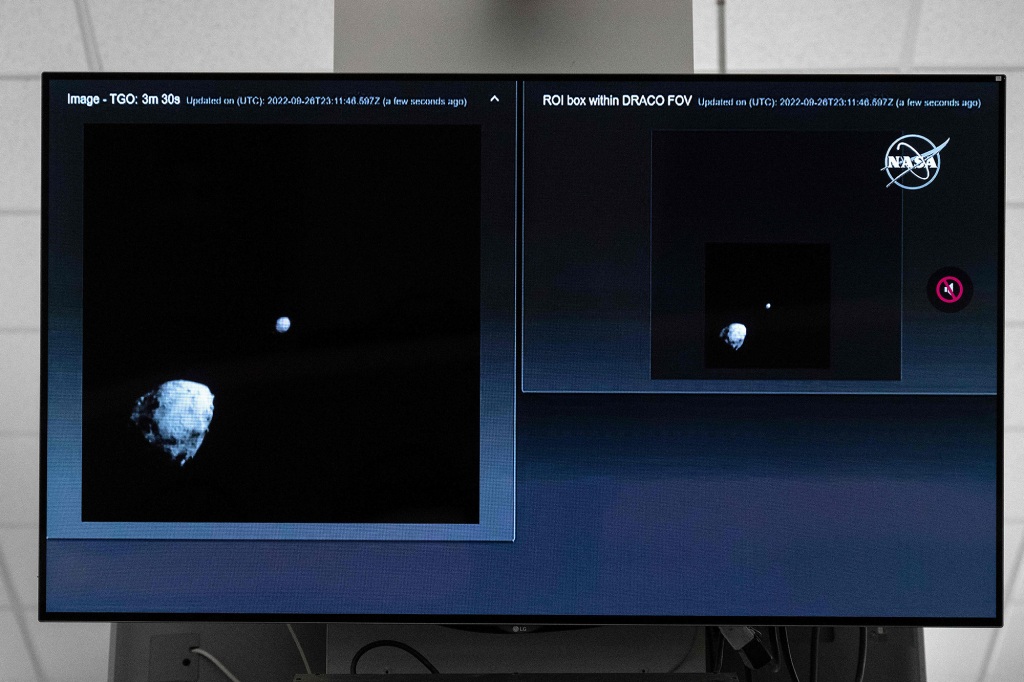NASA’s DART asteroid collision shown in newly released photos
Stunning images showing NASA’s DART spacecraft’s intentional collision with an asteroid were released Tuesday.
The Italian Space Agency shared the first images snapped by the tiny camera trailing the vending-machine-sized spacecraft, the LICIACube — or Light Italian Cubesat for Imaging of Asteroids.
The images were transmitted seven million miles back to earth about three hours following NASA’s successful impact on the asteroid Monday night during a test run to prepare for when a massive space rock actually threatens Earth, according to Space.com.
The images from Agenzia Spaziale Italiana show the asteroid before and after impact, with clouds of debris surrounding the 530-foot space rock, called Dimorphos. One image shows a brilliant flash of light as the spacecraft hit.
“We’re really very proud,” Elisabetta Dotto, science team lead at Istituto Nazionale di Astrofisica (INAF), said during a news conference held in Italy on Tuesday.
The images are the first of several to be released in the coming days.
“Dimorphos is completely covered really by this by this emission of dust and detritus produced by the impact,” Dotto said.
DART, the Double Asteroid Redirection Test, smashed into Dimorphos at 15,000 miles per hour around 7:15 p.m. Monday night, destroying the craft as expected.
The spacecraft successfully knocked it out of its 12-hour orbit, scientists say.

Astronomers are now monitoring Didymos asteroid system to measure how much Dimorphos’ orbit sped up, according to Space.com.
“We still need a little patience, let the scientists speak to understand the value of these images,” Giorgio Saccoccia, President of ASI, told reporters.
The $325 million mission will likely only benefit future generations, as no known asteroid larger than 450 feet is projected to hit the Earth over the next century, according to the Planetary Defense Coordination Office.
LICIACube, Italy’s first deep space mission, is now barreling through the depths of space into oblivion as it continues to shoot images back to earth.
Read the full article Here


